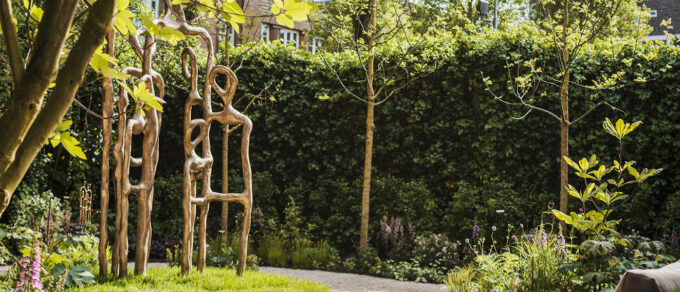PM10 Research: reducing air pollution with Mobilane Green Screens
- Mobilane Green Screen
It is vital and also one of our core values to be innovative and continuously improve our products and to explore and understand the use and scope of our products in landscape and construction projects. In this way we can continue to provide the most effective natural solutions to improve the environment, air quality and overall environment of a landscape.
In partnership with Atkins, a leading authority on design and engineering in the built environment, we installed Mobilane Green Screens with Hedera (ivy) at a site in downtown Birmingham UK. We did this to investigate whether our hedges contribute to the reduction of air pollution.
Atkins & Mobilane Research
In this research project carried out in 2015, Mobilane Green Screens were placed along the A38 (Bristol Street) in Birmingham. The installation was initially intended to improve the visual appeal of the road and to contribute to the improvement of air quality in the area.
Results
Staffordshire University offered expertise in the visualisation of particles on leaves to show that the ivy screens could capture air pollutants. In this study, the research team examined leaves for PM10 to PM1.0 contamination in order to evaluate the effectiveness of Mobilane Green Screens.
As a basic comparison, ‘clean’ leaf samples were taken from a nursery in a rural environment that grew Mobilane Green Screens and compared with the polluted leaves from the Mobilane Green Screens planted along the A38. Samples were taken from the ivy leaves before the screens were installed and then again a month later. The differences in captured PM10 and PM2.5 particles were then studied, comparing pollution exposure levels in this busy urban environment. See photos below. On the left the image of ivy leaves directly from the nursery and on the right the image of ivy leaves exposed to air pollution along the side of the road.

What is particulate matter / PM10?
Fine dust, also known as PM, is a mixture of solids and liquid droplets floating in the air. Some particles are released directly from a specific source, while others form in complicated chemical reactions in the atmosphere. Particles come in a wide range of sizes.
Particles with a diameter less than or equal to 10 micrometres are so small that they can enter the lungs and potentially cause serious health problems. Ten micrometers is less than the width of a single human hair. Coarse dust particles (PM10) have a diameter of 2.5 to 10 micrometers. PM2.5 with a diameter of less than 2.5 micrometers is also called ultra fine dust.
Conclusion
As you can clearly see on the pictures above, there are clearly more polluted particles in the leaves on the right hand side of the picture, the leaves that are exposed along the side of the road. Analysis of various test locations shows that the Mobilane Green Screens captures 40-60% of (ultra) fine dust. More experiments are needed to validate these results statistically, but the initial findings are of great importance in a search for a natural fighter against air pollution in urban areas.
Download the study here.





